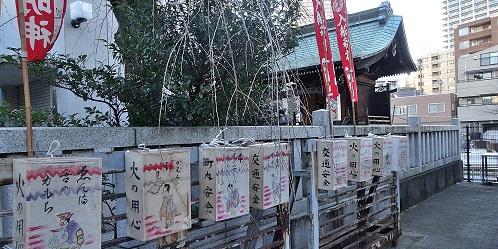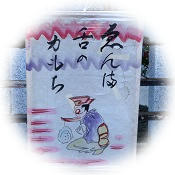
 February 12 is the first day.
February 12 is the first day.
In the former Tsukuda Island area, there are three Inari Shrines and four shrines.
Part (Kamimachi) is one of the precincts of Sumiyoshi-jinja Shirine, and is said to have been transferred from 1-chome Odenmacho in 1869.
In the second part (Shitamachi), "Mori Inari Shrine" is said to have originated from the Yashiki deity enshrined by the Magoemon Mori clan of Tsukuda Island.
In the third part (Azumacho), "Nami-Inari Shrine, O (O) Saki Inari Shrine", which leaves the remnants of the former Ryoshimachi in the inscription of Tamagaki.
It is said that the god of Kyoto Fushimi Inari Taisha, the headquarters of Inari Shrine, descended on the first day of February 711.
A rural festival praying for a good harvest became the prototype, and the Inari religion was linked to the "Hatsuno Matsuri".
In the Edo period, at the first day festival, it is said that the shrine was decorated with a picture lantern of Chiguchi (meaning a fashionable) and was crowded, but the atmosphere still remains in the Tsukuda area.
It is a twist of dialogues such as plays and adult phrases, and one of the decorated lanterns can be read as "the power of the tongue (the power under the edge)".
The festival will be operated by a lecturer of Sumiyoshi Tsukuda, and from 10:00, Sumiyoshi-jinja Shirine Hiraoka Miyaji will go around each Inari Shrine, and a ceremony will be held.
In addition to frying as a sacred dish, sake, seafood, mountain food, etc. are offered, and dedication flags dyed with the names of each shrine are lined up, the sound of drums echoes, and the festival mood is excited.

